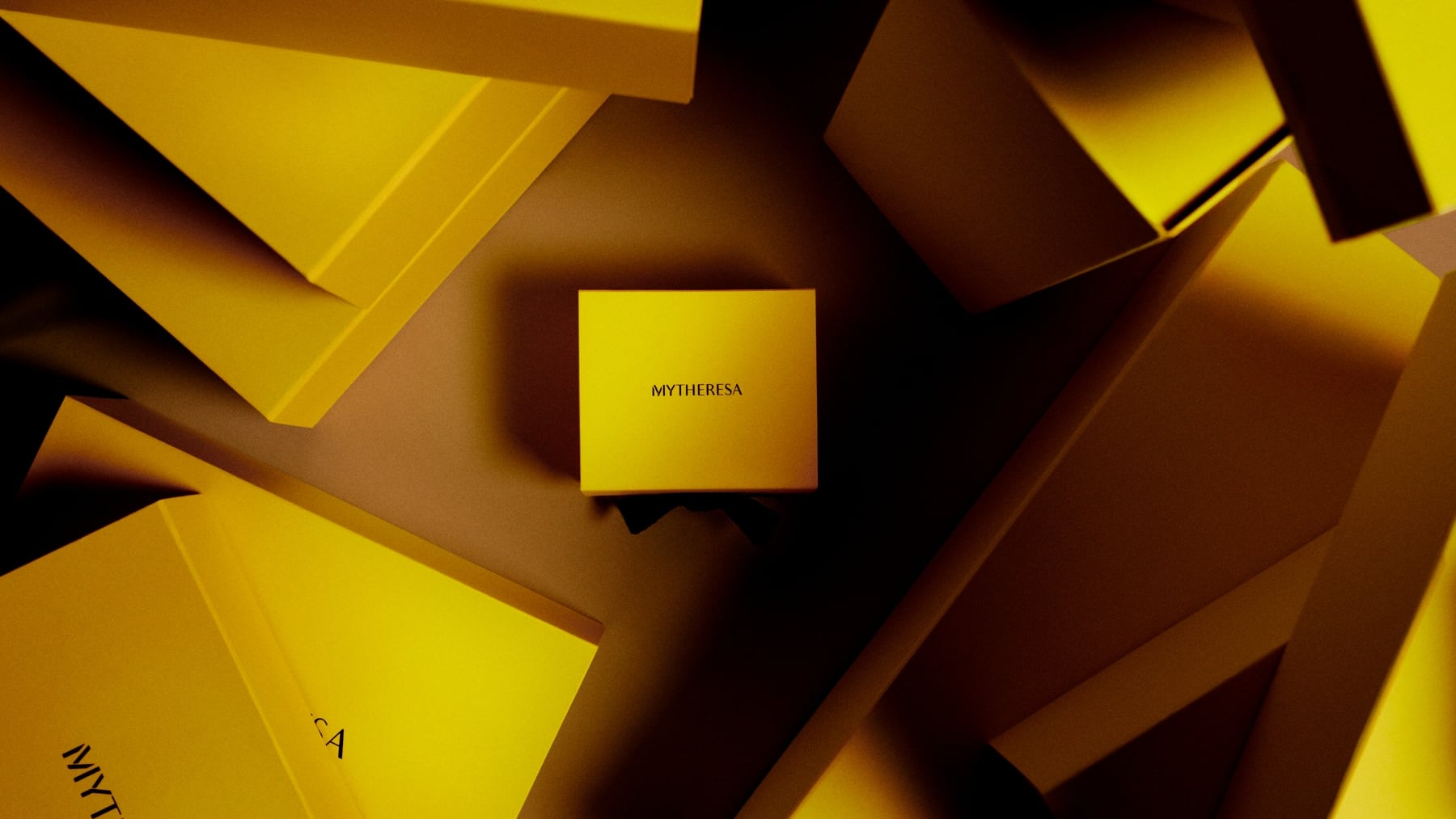
For Mytheresa, acquiring Yoox-Net-a-Porter is its chance to become the biggest player in luxury e-commerce.
Once the deal — which experts expect to face minimal regulatory hurdles — goes through, the German e-tailer has the opportunity to pair its own expertise in catering to high-net-worth customers with Net-a-Porter’s ability to target aspirational consumers with its mix of high-end and accessible-luxury brands, giving it the the tools to address the entire luxury market.
“I can speak to two different customers and that’s how we want to stay ahead and stay relevant or become even more relevant,” Kliger said in a recent interview with The Business of Fashion. “Once the deal is close … we compete against each other in the sense of who’s better in getting clients attracted, understanding the customer formula.”
The potential payoff is big: Net-a-Porter generated €2.5 billion ($2.7 billion) in sales in 2023, while Mytheresa did €914 million; the latter estimates the combined entity can reach €4 billion in by 2029. But to get there, Mytheresa has to confront the fact that YNAP is a shrinking and unprofitable business. Sales dropped 15 percent year-over-year in the quarter that ended in June, and it reported €128 million in losses in 2023.
Mytheresa plans to consolidate some of its operations with Net-a-Porter, which should help cut costs. Net-a-Porter and its menswear counterpart, Mr. Porter will use Mytheresa’s technology platform, though its off-price sites, Yoox and The Outnet will remain on the company’s existing platform. But Mytheresa will have to implement bolder changes at YNAP to make the merger work, improving inventory management and merchandising, while retaining both companies’ competitive edges in a still challenging luxury sector.
“The transition phase will absorb energy and time of management, and so execution risk, which was also called out by investors and analysts, is one we need to be aware of,” Kliger said. “This is a big exercise.”
Finding Synergies
To course correct at YNAP, cutting costs is essential. For Mytheresa, it helps that Richemont is footing the bill: the Swiss luxury conglomerate is recapitalising YNAP with €555 million ($605 million) in exchange for a 33 percent stake in Mytheresa, with an additional €100 million six-year revolving credit facility.
With Richemont taking on much of the financial burden, Mytheresa is free to focus on returning YNAP to profitable sales growth.
That freedom to focus will be helpful in adjusting to the demands of the new business, which will reach a scale beyond what Mytheresa is used to — it currently carries 250 brands on its site while Net-a-Porter sells more than 800.
By migrating Net-a-Porter and Mr. Porter onto its technology platform, Mytheresa can leverage its strengths to improve Net-a-Porter’s performance. For example, Mytheresa uses proprietary technology to identify potential high-spending clients — also least likely to make returns — based on their browsing data on its site and offers them perks like free shipping. This capability helps keep its product returns low and sales volume high, and could be introduced on Net-a-Porter’s site.
Migrating an online retailer to an entirely new platform, though, can be expensive and time-consuming, as YNAP knows well. The company’s current woes can be traced in part to its own €200 million tech upgrade in 2017, which led to functional hiccups and a sales decline.
To ensure a smooth transition, Mytheresa could fold Net-a-Porter’s backend operations, including managing customer data and logistics, into its platform, said Mario Ortelli, managing director of luxury advisory Ortelli & Co. Mytheresa also has a 58,000 square feet fulfilment centre in Germany that can be a distribution hub for both companies in Europe. Meanwhile, YNAP’s distribution centres in North America will strengthen Mytheresa’s position in the region, where it currently generates 20 percent of its net sales.
Consumer-facing features, including marketing and customer service, are better off being customised for each retailer to serve their respective customer bases — high-net-worth clients for Mytheresa, and more and aspirational luxury shoppers for Net-a-Porter, Ortelli added. Mytheresa says its software is able to connect to any part of a multi-brand retailer’s existing platform, which should allow it to improve specific features without an entire overhaul.
“It’s as much of a technology transformation as it is a business transformation,” said Kelly Goestch, chief strategy officer of e-commerce software firm Commercetools. “What they need to do is take a hard look at what is unique to them in their business and build that.”
Maintaining Brand Position
As Mytheresa looks to create a leading luxury e-commerce firm with YNAP, it plans to preserve both companies’ identities to avoid cannibalisation.
“Once we are integrated and, and really set up … the brands remain independent,” Kliger said. “We will have dedicated management teams that wake up in the morning and think how Mytheresa is good and dedicated teams that think how Net-a-Porter is good.”
How the company achieves that will be a make or break moment. Kliger says he wants to double down on Net-a-Porter’s editorial content, such as its Porter magazine, which he said contextualises its product offering. But what once felt cutting edge for an e-tailer has become little more than “a pretty picture and some words,” said AJ Lacouette, managing partner at consulting firm Global Advisory, as competitors like Ssense have since become known for their daring editorial output.
Instead, Net-a-Porter might benefit from reconfiguring its merchandising to better highlight its relative accessibility. It could remove overlapping ultra-luxury brands that also sell on Mytheresa, such as Brunello Cucinelli and Bottega Veneta, and deepen its selection of contemporary and accessible-luxury labels to better appeal to its shoppers, Lacouette added.
“If they don’t separate them out and really say ‘this is going to be you [and] this is going to be you,’ then they’re going to fail,” Lacouette said.
Key for both will also be retaining trust with brand partners, who, spooked after the luxury e-commerce sectors upheaval of the last year, are prioritising their DTC businesses. Mytheresa has kept brands happy by giving them access to top-spending clients through exclusive collections and in-person events. Net-a-Porter, on the other hand, has more to prove, having reduced its buys in recent seasons to focus on items that are likelier to sell. One resortwear brand says the number of styles it carries on the site each season have shrunken. The brand, which has seen single digit year-over-year sales growth on Net-a-Porter, hopes the e-tailer will start taking more risks on standout pieces that catch consumers’ eye, even if they aren’t cash cows. (The brand declined to be named in the story because of its current relationship with Net-a-Porter).
Perhaps the biggest speed bump in combining Mytheresa and YNAP will be reviving sales at off-price sites Yoox and The Outnet, a category Mytheresa has little expertise in. It should consider merging them into one site and developing new selling strategies, such as hosting in-person events or forming partnerships with second hand retailers, Lacouette said.
“Try something completely different. Go wild,” she added. “Start making it a moment, and you create a buzz around it.”
Plenty of challenges lie ahead. But Mytheresa still has the potential to create a profitable and wide-reaching luxury e-commerce giant with YNAP if it manages to capitalise on the best parts of each company, while improving their shortcomings.
“A lot of this is really around absolute clarity, rigour and focus of what each of those brands is going to stand for in the new order,” said Rebecca Robins, a luxury brand expert and advisor. “It ends with really getting tough now and hardcore about the absolute brand proposition, because the stronger that is and the clearer they are … the more licence they can have over time.”


